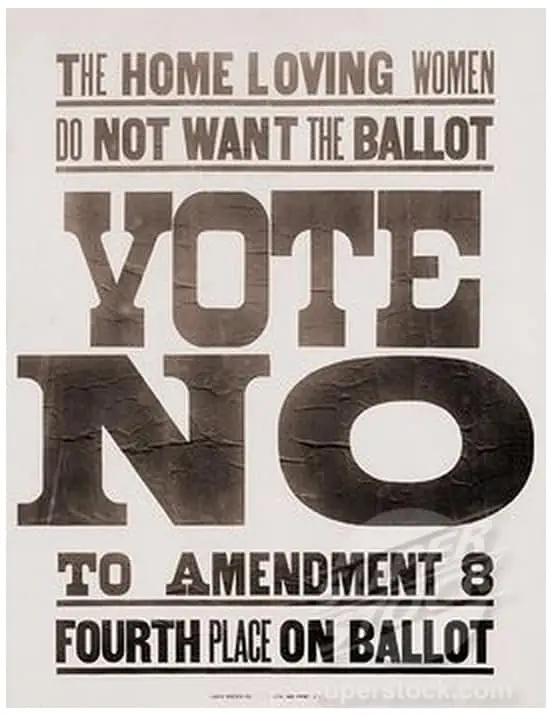Part One: Understanding Author’s Reasoning
Before we begin, let’s discuss the author’s reasoning for creating a document and the evidence that can be found in these documents.
Historical documents are written for many reasons. Authors are influenced by varying factors to create these documents: social standards, trends, current events, wars, mechanization, etc. These different factors allow readers to gain a greater insight into the time period and the mindsets of people.
It’s important that we understand the author’s reasoning for creating a text, data, comic, poster, etc. Knowing the author’s reasoning will allow readers to find any bias in the information. It will also help readers to logically and thoughtfully answer questions. Readers must be in tune with the author’s reasoning.
To understand how authors have different reasonings, let’s examine two pieces of information from the Women’s Suffrage movement. In the late 1800’s a battle for women equality arose in America, creating high tensions and varying opinions. Two definite sides had formed in America: those who wanted the 19th Amendment to pass and guarantee women equality, and those who were adamantly opposed. In response, speeches were made declaring opinions, comics were printed in newspapers, and propaganda was hung in an attempt to sway people’s vote.
Below are two pieces from the Women’s Suffrage Movement. Both were created for a particular reason, but as you will see, their reasonings are completely different.
Sample A:
First, let’s read a speech by Elizabeth Cady Stanton, from the Seneca Falls Convention.
Delivered July 19, 1848, Seneca Falls, New York.
“But we are assembled to protest against a form of government existing without the consent of the governed – to declare our right to be free as man is free, to be represented in the government which we are taxed to support, to have such graceful laws as give man the power to chastise and imprison his wife, to take the wages which she earns, the property which she inherits, and, in case of separation, the children of her love; laws which make her the mere dependent on his bounty. It is to protest against such unjust laws as these that we are assembled today, and to have them, if possible, forever erased from our statute books, deeming them a shame and a disgrace to a Christian republic in the nineteenth century. We have met to uplift woman’s fallen divinity upon an even pedestal with man’s. And, strange as it may seem to many, we now demand our right to vote according to the declaration of the government under which we live.
The right is ours. The question now is: how shall we get possession of what rightfully belongs to us? We should not feel so sorely grieved if no man who had not attained the full stature of a Webster, Clay, Van Buren, or Gerrit Smith could claim the right of the elective franchise. But to have drunkards, idiots, horse-racing, rum-selling rowdies, ignorant foreigners, and silly boys fully recognized, while we ourselves are thrust out from all the rights that belong to citizens, it is too grossly insulting to the dignity of the woman to be longer quietly submitted to.
The right is ours. Have it, we must. Use it, we will. The pens, the tongues, the fortunes, the indomitable wills of many women are already pledged to secure this right. The great truth that no just government can be formed without the consent of the governed we shall echo and re-echo in the ears of the unjust judge until by continual coming we shall weary him.”
“http://www.greatamericandocuments.com/speeches/stanton-seneca-falls.html”
Sample B
And now, examine this piece of propaganda from the time period of the Women’s Suffrage Movement.

Part Two: Practice Questions
After examining the samples above, answer the following questions.
1. Which of the following represents the viewpoint of the speaker at the Seneca Falls Convention?
A. Women should not be treated as subordinates to men.
B. Women should appreciate their role as wife and mother.
C. Women should abide by current standards of the Constitution.
Answer: A. Women should not be treated as subordinates to men.
2. Which of the following is a supporting detail found in Sample A?
A. Only a woman is physically capable of giving birth, so naturally, it is her responsibility to stay home and tend to her family.
B. Women are physically smaller than men and therefore should be subordinate to them.
C. The government taxes women, and so women should have the right to vote in a country they are helping to fund.
Answer:C. The government taxes women, and so women should have the right to vote in a country they are helping to fund.
3. From what you can assume, Sample B was created was to:
A. sway people to against the Women’s Suffrage Movement
B. sway people to vote for Women’s Suffrage
C. persuade people to come to a come to an informational meeting
Answer: A. sway people to against the Women’s Suffrage Movement
